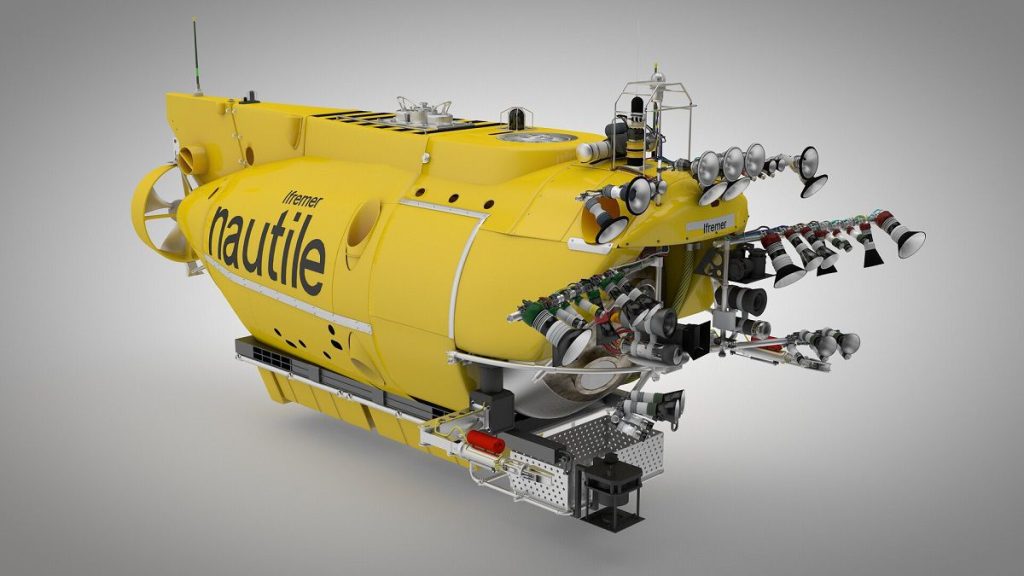The bathyscaphe is a type of deep sea submersible vessel used for exploring great depths of ocean. Though self-propelled, a bathyscaphe does not operate similar to a submarine. However, it is a unique deep-sea vessel which has a cabin crew, buoyant tanks, and a unique ascending system. A bathyscaphe in the deep sea is similar to a hot air balloon in the sky. Having a huge buoyant capacity, bathyscaphes are the only manned submersibles that can dive more than 10,000 meters below the seawater surface.

Main Parts Of Bathyscaphe
Gasoline Tanks
The bathyscaphe has huge tanks which are filled with gasoline to provide the vessel with the needed buoyancy. Gasoline provides the vessel with high buoyancy and is most importantly incompressible. This property of gasoline helps in resisting high pressures at greater depths. The gasoline tanks are airtight and filled permanently.
Air/Water Ballast Tanks
Apart from the gasoline or float tanks, the bathyscaphe also has ballast tanks for additional buoyancy. Air or water ballast tanks are basically used for descending the vessel into sea water. When the vessel is at the surface the tanks are completely filled with air. In order to commence diving, the tanks are gradually filled with seawater and the vessel dives due to the weight inside the tanks.
Crew Cabin
The crew cabin was generally at the bottom of the vessel, below the ballast and gasoline tanks. The bathyscaphe has small crew cabins which can accommodate two to four crew members. The walls of the cabin are built extremely thick to withstand high pressures at greater sea depth.
Electromagnet and Ballast Hoppers
Unlike a conventional submarine, a bathyscaphe cannot ascend by substituting sea-water in the ballast tanks with compressed air. For this reason, it uses a special method consisting of iron pellets. The vessel is provided with two large hoppers which are filled with several tonnes of iron pallets held together using electromagnets.
Sail
The sail is a protruding structure on the uppermost part of the bathyscaphe, which allows operation in rough weather without flooding. The sail also accommodates various instruments such as tachometers, current meter, and underwater telephone. The sail is connected to the crew cabin through an entrance tunnel. The tunnel gets filled with water when the vessel dives into the sea. Compressed gas is used to push the water out of the entrance tunnel at the end of the dive.
Propeller and Stabilizer
The bathyscaphe also has propellers, fitted at the top and used for steering the vessel. Generally two propellers are provided to the vessel. A stabilizer is also provided and is attached at the rear of the vessel. However, the stabilizer, unlike the rudder, doesn’t move but provides the needed turning through the vessel’s electric motors.
Working of Bathyscaphe
Whenever a dive of the vessel had to be made, the air filled ballast tanks were gradually filled with seawater, increasing the weight inside the ballast tanks. When the desired depth was reached, the filling of tanks is stopped. The gasoline in the huge tanks provides the needed buoyancy to the vessel. However, when the vessel needs to ascend, it cannot pump compressed air back into the tanks to replace the seawater.
For this, the bathyscaphe uses a peculiar method which consists of dropping of iron pellets from built-in containers in the shape of hoppers. As the iron pellets are dropped to the ocean floor through the opening at the bottom of the vessel, the vessel gradually rises to the top of the water surface. In case of a power failure, the system also acts as a safety device by immediately dropping all the pellets to the ocean bed and brining the vessel to the surface removing the electromagnetic power.


